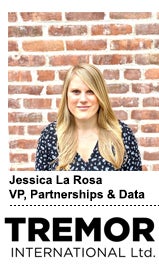“On TV & Video” is a column exploring opportunities and challenges in advanced TV and video.
Ad tech companies are striking partnerships left and right to aggregate as much TV data as possible in their quest to compete against the walled gardens.
But activation is still a challenge. Too many middlemen make media buying a convoluted experience.
In response, DSPs and SSPs are evolving – and consolidating – to help advertisers buy against more customized segments and measure tune-in without having to rely on TV manufacturers.
Whereas companies made moves a few years ago to decouple their buy and sell-side technology, the pendulum is now swinging back toward bringing the buy and sell side together and cutting out intermediaries.
As part of that trend, Tremor International – formerly Taptica – now houses the buy-side assets of Tremor Video, the DSP it bought in 2017, and Unruly, the SSP it bought from News Corp in 2020. In October, it acquired CTV video ad server Spearad.
Rather than limiting the level of audience customization based on the buying model, which is often the case, Tremor is working toward offering “customization to advertisers regardless of how they want to activate,” said Jessica La Rosa, VP of partnerships and data.
La Rosa spoke with AdExchanger about Tremor’s TV Intelligence solution, which provides access to commingled deduplicated data for targeting and how it fits into bigger-picture trends across the industry.
AdExchanger: Are DSPs, SSPs and media companies all evolving together to accomplish more customized audience buying?
LA ROSA: Some of them are – and some of them are not.
We’re at an inflection point in the industry where it’s necessary for players across the ecosystem to work together and align on a myriad of things, including how we allow access to data, how we measure and the standardization of those metrics.
I don’t see that happening perfectly today. But I do see [the start] of a larger initiative for companies banding together to allow for transparency – similar to the open source initiative that cropped up a few years ago around TV viewability.
Do you think some DSPs will just cut out SSPs entirely if they can?
Yes. Anecdotally, I see a trend in platforms trying to cut out middlemen or intermediaries.
How do advertisers benefit by going through an end-to-end platform rather than working directly with publishers?
An end-to-end platform is the promise of programmatic media and ad tech. It allows advertisers to run campaigns with the click of a button rather than having to go through multiple different parties. Going directly to an SSP is going to offer you scale, flexibility, efficiency and automation.
Playing both sides of the coin is really beneficial for advertisers because they can access the same data regardless of the platform they activate on. If an advertiser is really attached to a different DSP, for example, we can still layer that data on the supply side through our SSP.
Does the end-to-end trend threaten walled gardens?
If the ecosystem continues to exist in its current form, there will still be a need to go directly to these OEMs we consider walled gardens because of their scale. Marketers understand the importance of that scale. It represents such a huge portion of TV-viewing households.
But I do think the tide is turning a little. There will be questions, requests and even eventually expectations for easier access to transparency, measurement and unduplicated reach across aggregated data sets.
What additions did Tremor recently make to its TV Intelligence solution?
We increased our scale footprint with a few key partnerships, including with TVision and iSpot. We’re now able to access TV viewership data from 44 million US households.
The aggregated data set includes deduplicated data from set-top boxes, ACR, cross-screen panels and 18 local and national MVPDs.
How does this growth tie into Tremor’s recent deal with the VIDAA OS?
Starting in May, we’ll be expanding our data set even more with households that have the VIDAA operating system installed on a smart TV. The addition of VIDAA will push our household reach above and beyond 44 million US households.
Does Tremor transact on linear data or just collect it?
The TV Intelligence data set includes both streaming and linear TV data. But we’re not accessing linear TV inventory from a media buying perspective – we purely run campaigns across digital and audio formats.
How does Tremor’s solution tie into the evolving relationship between buyers and sellers across the industry?
We’re trying to make things easier for advertisers by bridging the gap between buyers and sellers so data is available without having to go through multiple parties.
Commingled data sets are beneficial to the supply side, too, because that data is available across our entire footprint of formats and platforms.
It starts with focusing on ease of activation for our buyers. Compiling data into a single platform – and allowing our advertisers to activate through their DSP or SSP of choice – is really helping solve the fragmentation issue we’re seeing across the landscape.
What’s the biggest change coming to the industry this year in terms of customized audience buying?
The focus for the industry is going to revolve around measurement.
Where first-party data fits into customized audience targeting strategies is becoming more of a hot button issue, as well – but what advertisers and marketers are really pushing for is an accredited, accurate measurement solution they can use to get feedback on the performance of customized audience buying strategies.
By the middle to the end of the year, we’ll probably see a couple companies out front with those types of solutions. I don’t think there’ll be just one.
This interview has been edited and condensed.












